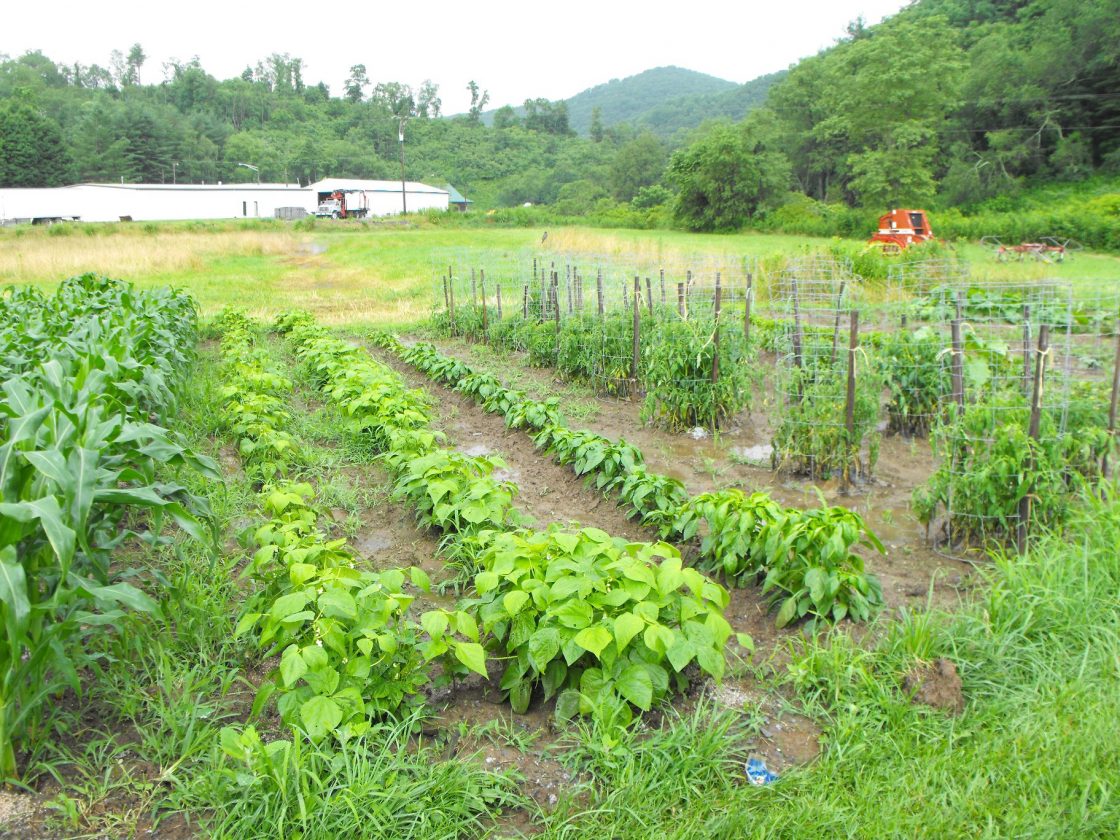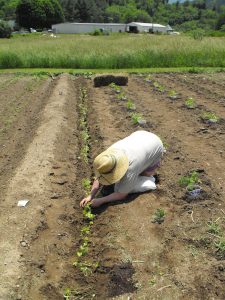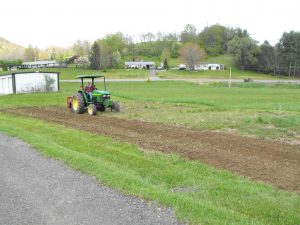The first real tool I ever had personal control over, so much so that my parents dedicated one to me and me alone, was the garden hoe. Looking down what seemed like an endless row of green beans, happy sprouts that reached for the spring sun, I can even today feel that worn-smooth wooden handle and the calluses on my tender young hands. In my family if you wanted to eat you had to work the garden. It was as simple as that.
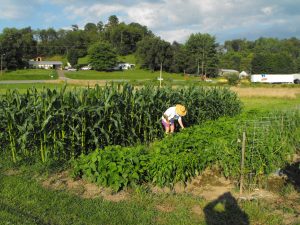 We call it agriculture but that is just a euphemism for ‘work’. Growing vegetables in the home garden has evolved into a science; but that science was always there, information stored in the minds of the folks that perfected the technique. With modern technology using rotary-tillers and irrigation systems it may seem easier but the basic premise is still true: what you put in is what you will get out. A successful and productive garden is the result of learning, planning, timing, the right materials, luck and hard work. The rewards of a successful garden transcend mere vegetables; the satisfaction of providing for oneself is what Appalachian people are all about.
We call it agriculture but that is just a euphemism for ‘work’. Growing vegetables in the home garden has evolved into a science; but that science was always there, information stored in the minds of the folks that perfected the technique. With modern technology using rotary-tillers and irrigation systems it may seem easier but the basic premise is still true: what you put in is what you will get out. A successful and productive garden is the result of learning, planning, timing, the right materials, luck and hard work. The rewards of a successful garden transcend mere vegetables; the satisfaction of providing for oneself is what Appalachian people are all about.
In April of 1990 I moved our family to eastern Virginia when I took a job with the Defense Department. We rented a house in a subdivision in Gloucester Point, and as soon as we were moved in I drug out “Old Agony”, our Sears and Roebuck garden tiller (that hateful, infernal machine that roared like a wounded tiger and smoked like a Bulgarian bus driver), and proceeded to turn most of the back yard into a garden. This made quite the stir among our neighbors, they having not been raised in a rural setting, and only the Korean lady next door shared our enthusiasm (having been raised hungry she knew what a garden meant). The neighbors seemed amused at our labors until later that summer when we were bringing in the corn and broccoli, tomatoes and green beans, the onions, potatoes, cucumbers and squash; that same Korean lady (her name was Mona) taught my wife Korean cooking and with her we shared the fresh bounty. In that suburban setting we raised our two young sons the way I had been raised, to know the difference between a weed and a bean sprout, and they both became familiar with the garden hoe just as I had. I think that garden became a source of some pride for them; they were learning self-reliance and the concept of reward for hard work, and when they had friends over for supper they would casually remark that they grew the vegetables themselves. When we bought a tract of land and built our new home in 1998 in the upper portion of Gloucester County our oldest son, Wade, said, “Where are we going to put the garden?”. I cannot express in words the pride I felt at that moment, at that simple question.
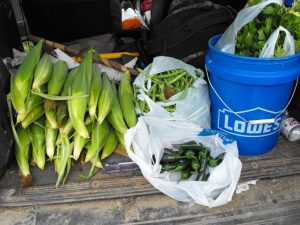 As I drive down the roads today, even in our remote and rural Grayson County, I do not see the gardens behind the houses that I once did. We all seem to be in such a hurry, too busy to turn the soil and get it under our fingernails. Something has happened to our society and I am puzzled by it; too many people have told me the garden is more trouble than it is worth. If those folks mean in terms of time invested versus money, they may have an argument; but what I get out of that garden is far more than greens. Even now, in the midst of winter, the flats of sprouts are covering our kitchen table and every place in the house that they can snatch a patch of sun; soon together Cecelia and I will nurse them through the Appalachian summer and hopefully, eventually, into the Hampton family larder.
As I drive down the roads today, even in our remote and rural Grayson County, I do not see the gardens behind the houses that I once did. We all seem to be in such a hurry, too busy to turn the soil and get it under our fingernails. Something has happened to our society and I am puzzled by it; too many people have told me the garden is more trouble than it is worth. If those folks mean in terms of time invested versus money, they may have an argument; but what I get out of that garden is far more than greens. Even now, in the midst of winter, the flats of sprouts are covering our kitchen table and every place in the house that they can snatch a patch of sun; soon together Cecelia and I will nurse them through the Appalachian summer and hopefully, eventually, into the Hampton family larder.
I think that’s worth my time.
A FEW GARDEN SECRETS
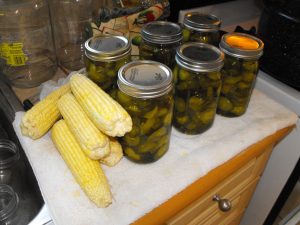 The old folks had a few ideas about the garden that cannot be ignored. Gardening in the mountains (above 2500 feet elevation) has a few rules; attention should be paid. We generally do not plant (with the exception of peas and potatoes) until the soil reaches a temperature of at least 60 degrees, and for us in Grayson County that is not before the end of the second week in May. This date can be fudged a bit, but if you plant too early your seed will just sit and rot, or the new sprouts will show greatly retarded growth in the cool temperatures. Competition from weeds and having insufficient water are sure killers to the successful garden, and if you are planning to grow some species, such as carrots, parsnips or celery (we grow great celery, thank you) it’s all about water. The variety of seed you select is very important; if you are planning to grow corn for ‘eat now’ and preserving (we freeze ours, off the cob) we use the Honey Select variety from Southern States Co-op, the best tasting corn I have ever known. Corn takes heavy nitrogen, without it you are just spinning your wheels, and for full cobs and big, juicy kernels heavy watering is necessary. Tomatoes and peppers also are water hogs, and make sure you plant your pepper plants fairly close together; peppers like to hold hands, as Cecelia’s sister from West Tennessee used to say, and the mature plants will astound you with their production if the leaves of one can touch the leaves of the next in the row. Don’t be discouraged if your harvest doesn’t meet your expectation, just do more research next year. Some species, like yellow squash, green beans or garlic, will grow on a wet cinderblock, while some others, like okra or artichokes, take a lot of attention. Your best planning is only as good as your research and work ethic. Take the time to garden, you will be glad you did, and you will be carrying on an Appalachian tradition.
The old folks had a few ideas about the garden that cannot be ignored. Gardening in the mountains (above 2500 feet elevation) has a few rules; attention should be paid. We generally do not plant (with the exception of peas and potatoes) until the soil reaches a temperature of at least 60 degrees, and for us in Grayson County that is not before the end of the second week in May. This date can be fudged a bit, but if you plant too early your seed will just sit and rot, or the new sprouts will show greatly retarded growth in the cool temperatures. Competition from weeds and having insufficient water are sure killers to the successful garden, and if you are planning to grow some species, such as carrots, parsnips or celery (we grow great celery, thank you) it’s all about water. The variety of seed you select is very important; if you are planning to grow corn for ‘eat now’ and preserving (we freeze ours, off the cob) we use the Honey Select variety from Southern States Co-op, the best tasting corn I have ever known. Corn takes heavy nitrogen, without it you are just spinning your wheels, and for full cobs and big, juicy kernels heavy watering is necessary. Tomatoes and peppers also are water hogs, and make sure you plant your pepper plants fairly close together; peppers like to hold hands, as Cecelia’s sister from West Tennessee used to say, and the mature plants will astound you with their production if the leaves of one can touch the leaves of the next in the row. Don’t be discouraged if your harvest doesn’t meet your expectation, just do more research next year. Some species, like yellow squash, green beans or garlic, will grow on a wet cinderblock, while some others, like okra or artichokes, take a lot of attention. Your best planning is only as good as your research and work ethic. Take the time to garden, you will be glad you did, and you will be carrying on an Appalachian tradition.

